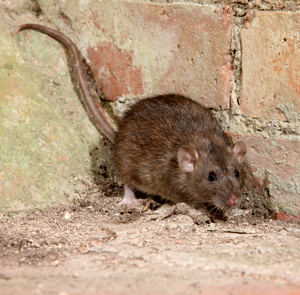What is a “Tamper-Resistant” Rodent Bait Station?
By Chris Williams on December 13, 2013.
Question
In one of your blogs, you said that people should use tamper-resistant bait stations when they are putting out mouse bait. What do you mean by “tamper-resistant”?
Answer
That’s a very good question. The labels on rodent bait packages have a statement that says that the bait must be placed in sites inaccessible to children, pets, domestic animals and wildlife…or that it must be placed in a tamper-resistant bait station. Approximately 10,000 children a year are accidentally exposed to mouse and rat baits, sometimes with dire results.
No one can predict what is an “inaccessible” location when it comes to children or pets. You should assume that a child or pet could reach the bait, then err on the side of caution and always use a protective bait station. Rodenticide bait labels used to specify “tamper-proof” bait stations until someone (probably a lawyer) officially changed the term to “tamper-resistant,” acknowledging that no bait station could be truly tamper-proof.
What EPA Calls “Tamper-Resistant”
EPA has a list of criteria that bait stations must meet in order to qualify as “tamper-resistant.” A typical tamper-resistant bait station is an unbreakable black plastic box with a locking lid. One of EPA’s criteria is that the bait station be strong enough to prohibit entry or destruction by dogs and by children under six years of age using their hands, their feet, or objects commonly found in the use environment (e.g., sticks, stones, broken glass, etc….).
There is a hole for the rodent to enter but inside the station are a series of walled-off compartments for the bait that prevents children from being able to reach inside and remove bait. There is usually a metal rod inside the bait station so that you can thread bait blocks on the rod to further secure the bait. Tamper-resistant bait stations also have a means to anchor them to the ground or large objects to prevent removal.
Be aware that rodent bait placed in a plastic tray, or any other kind of open container, does not qualify as a tamper-resistant bait station. Neither does a cardboard bait box or a lightweight plastic box that could be crushed. By the way, it’s a good idea to place mouse snap traps or glue traps in a tamper-resistant bait station, too, to keep them out-of-sight and away from children and pets. The mice will still find the traps inside the bait station.
You can buy tamper-resistant bait stations without bait, or you can buy pre-baited stations. Recently, EPA mandated that rodent baits sold to consumers have to be packaged with an EPA-approved bait station. Loose pellet rodent baits are prohibited. However, products that are already packaged and being sold don’t have to meet this requirement so you may still find mouse bait that is sold loose or with an open tray. There is no reason to purchase this bait if you can instead buy bait with a protective bait station included.
Professional pest control technicians always use tamper-resistant bait stations whenever they are managing rodents around homes or in other situations where children or animals could come in contact with rodent bait. If you’re not using a professional to get rid of your mouse problem, be sure that you act like a professional and use a tamper-resistant bait station for that mouse bait.
